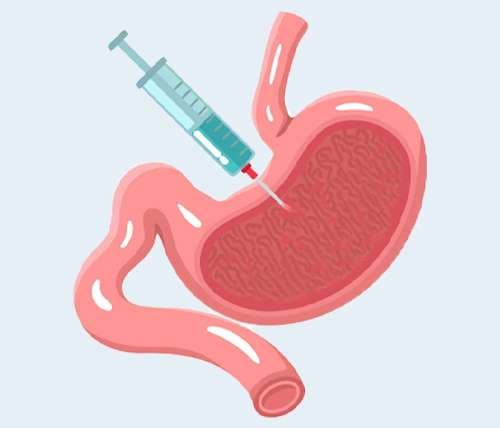What Is Non-Surgical Stomach Reduction?
For individuals struggling with excess weight or obesity, the best way to slim down is by adopting a healthy diet and regular exercise routine. However, some patients are unable to achieve significant weight loss despite these measures. Others successfully lose weight initially but later regain it. In such cases, there is growing interest in procedures that reduce the stomach’s capacity—especially non-surgical methods, which are often preferred due to the absence of incisions and a quicker recovery period.
Among the many non-surgical weight-loss techniques, the most appropriate method is chosen based on the patient’s overall medical condition. For patients diagnosed with metabolic syndrome or other comorbidities, it is critical to select a weight-loss approach that poses minimal health risks.
Whereas surgical and non-surgical methods may both be referred to as “stomach reduction,” they differ in important ways. Non-surgical procedures often work by temporarily reducing stomach capacity rather than permanently removing any part of it. In some non-surgical options, there is no actual reduction in volume—only a decrease in appetite. Patients who seek to bypass healthy eating and exercise by opting for non-surgical methods may be disappointed when they discover that these techniques require sustained lifestyle changes. Rather than focusing on a short-term diet plan, it is essential to develop balanced eating habits and a regular exercise routine as lifelong habits.
Another frequently asked question about non-surgical stomach reduction concerns the use of weight-loss medications. While certain medications can support obesity treatment (often in conjunction with bariatric procedures), over-the-counter “slimming pills” or supplements promising quick weight loss can pose serious health risks and are generally not recommended.
Non-Surgical Methods of Stomach Reduction
Several weight-loss techniques do not require surgery. Sometimes, non-surgical approaches can be chosen according to patient preference; in other instances, they may not be viable. For example, patients with morbid obesity often require a surgical procedure, and those who have already tried non-surgical interventions without success may also need surgery.
Among non-surgical methods, two of the most popular are the gastric balloon and stomach (gastric) Botox. When performed correctly and combined with healthy eating habits, these procedures can produce notable results—particularly in enabling a more rapid weight loss than might be achievable by diet and exercise alone.
Gastric Balloon: An Effective but Temporary Solution
One of the most commonly asked questions is, “How is a gastric balloon applied?” Gastric balloons can be administered in two main ways:
- Swallowable Balloon (Non-Endoscopic)
- Initially in capsule form, the balloon is swallowed with water.
- Once the balloon reaches the stomach, it is inflated.
- The balloon remains in the stomach for about 16 weeks.
- At the end of that period, the balloon is passed naturally through the digestive system.
- Endoscopic (Intragastric) Balloon
- Placed in the stomach via endoscopy under mild anesthesia.
- Once in place, the balloon is inflated.
- The duration it remains in the stomach can vary.
- If adverse effects occur, early removal may be necessary.
A gastric balloon is not suitable for individuals diagnosed with certain conditions like active peptic ulcer or severe gastroesophageal reflux (GERD). It is also generally avoided in patients who have previously undergone bariatric surgery.
Stomach (Gastric) Botox: A Minimally Invasive Method
Stomach Botox, which uses botulinum toxin, is another technique for people who wish to lose weight without surgery. The toxin is injected into the inner stomach lining, helping prolong the feeling of fullness.
- Who qualifies for Gastric Botox?
- Typically, those with a Body Mass Index (BMI) between 30 and 40.
- If BMI ≥ 40, surgical obesity treatment is more appropriate.
- If diet and exercise alone have not been successful, Botox can be considered to help prevent obesity-related health problems (e.g., hypertension, type 2 diabetes).
The procedure usually lasts around 30 minutes, and side effects are relatively rare when performed by a qualified physician. However, the effect of reducing hunger typically lasts only 6 months, after which normal appetite levels can return.

Pros and Cons of Non-Surgical Methods
Pros
- No incisions or sutures in the stomach.
- Fast recovery with minimal downtime.
- No hospital stay required in most cases.
Cons
- Effects are typically temporary. For instance, once the gastric balloon is removed or the Botox effect wears off, appetite may return.
- Patients risk reverting to old eating habits and regaining the lost weight if they do not maintain healthy lifestyle practices.
In other words, proper diet and exercise remain crucial, even after non-surgical procedures.
Who Is a Candidate for Non-Surgical Stomach Reduction?
A medical professional must evaluate each patient’s unique medical history and lifestyle to determine the most suitable approach. That said, non-surgical options are generally not appropriate for:
- Morbidly obese patients (BMI ≥ 40) – Surgical methods are usually more effective.
- Patients with active gastric ulcer or severe reflux – Gastric balloon, for example, may pose risks. However, Botox could still be an option for some.
- Pregnant women or those planning to become pregnant soon.
- Individuals with psychological conditions that prevent them from understanding or following the requirements of the procedure.
What to Expect After Non-Surgical Stomach Reduction
Patients who receive procedures like a gastric balloon or gastric Botox and follow the nutrition plan provided by their doctor can lose a significant amount of weight:
- Gastric Botox: Potential to lose 15–35 kg, depending on the individual.
- Gastric Balloon: May lose up to 25 kg within six months.
Individual results vary based on factors like starting weight, metabolism, and the patient’s commitment to ongoing healthy eating and exercise. After removal of the balloon or once the Botox effect subsides, continuing a well-balanced diet and regular workouts is essential to maintain weight loss over the long term.




